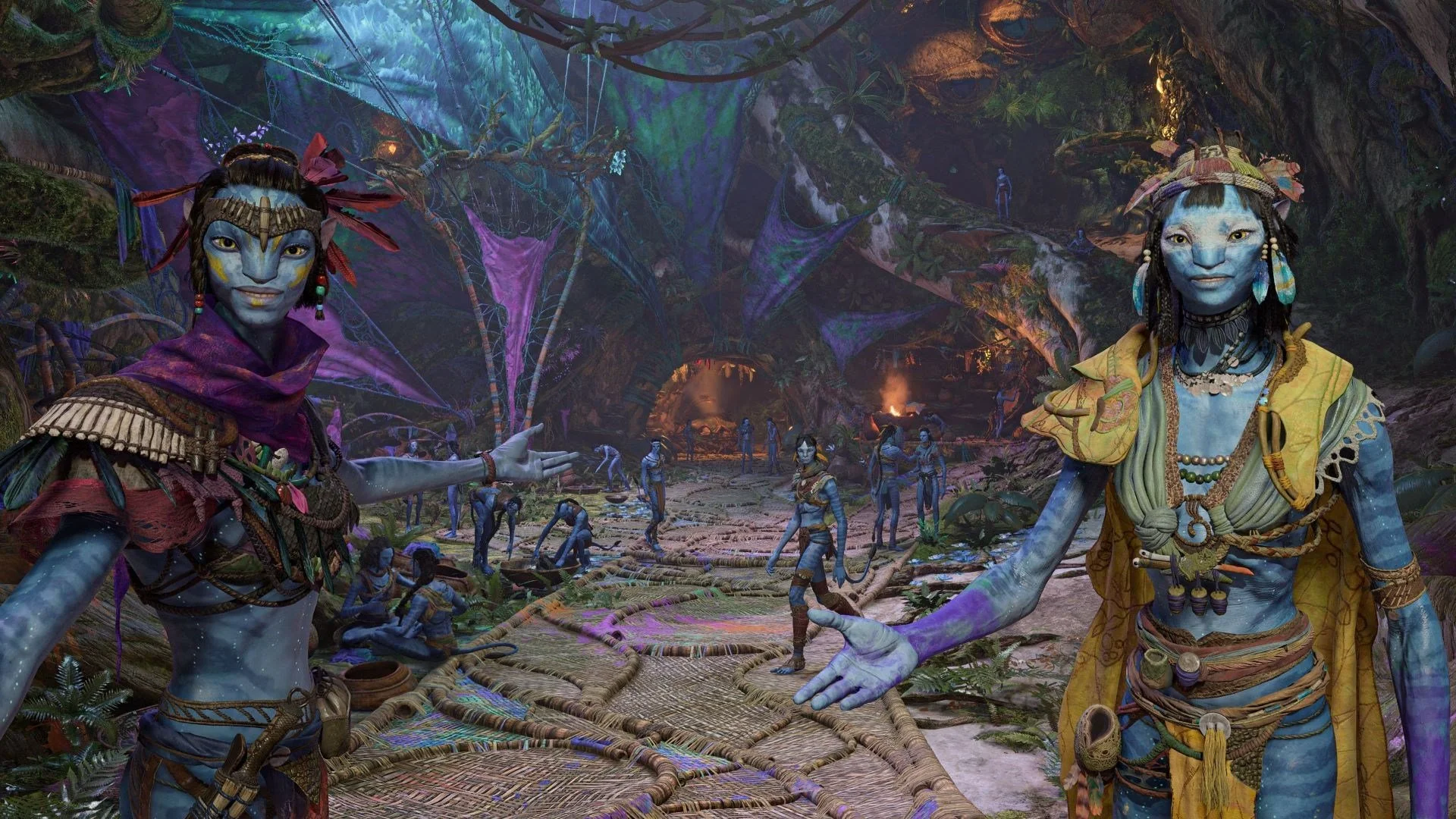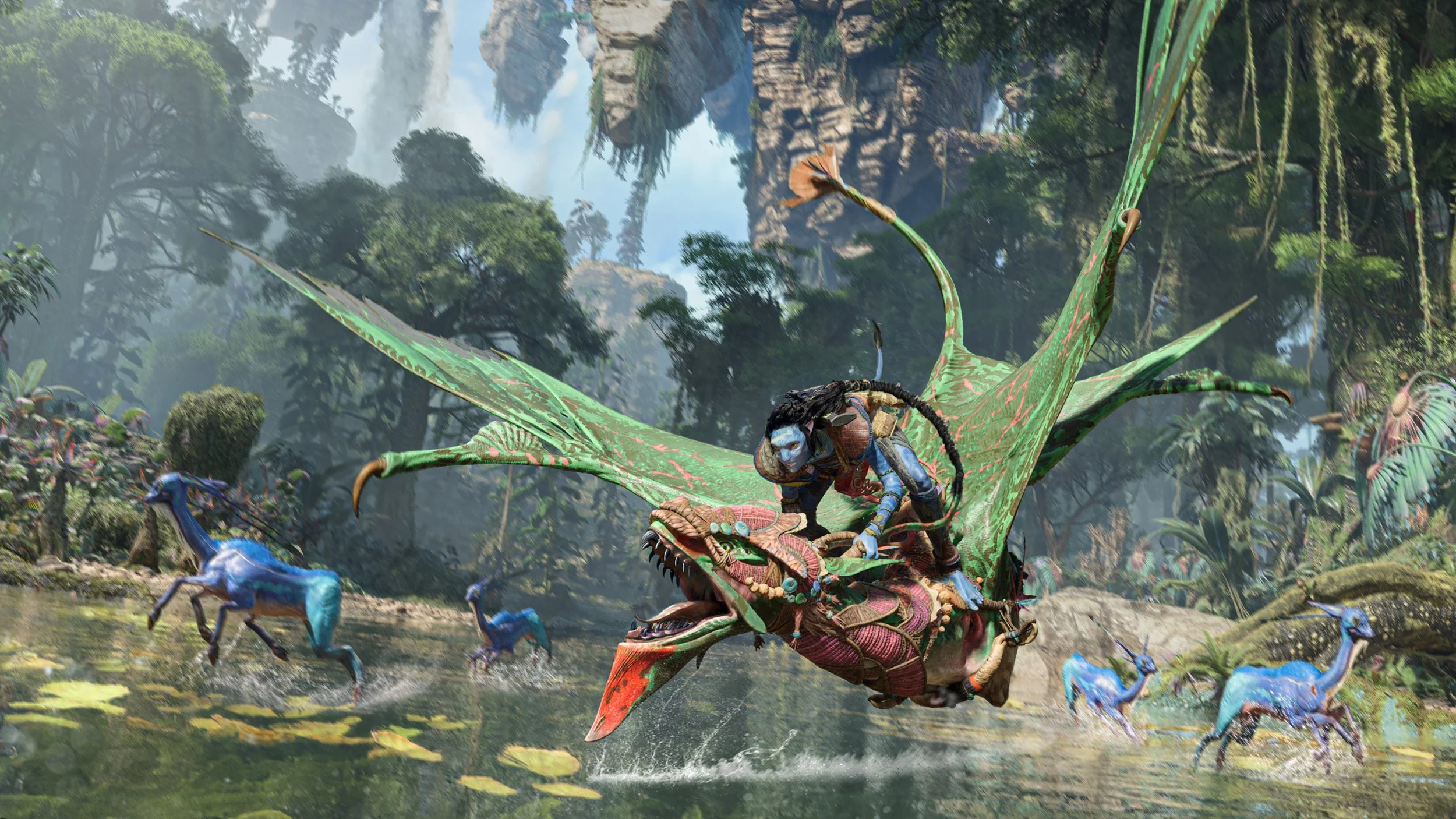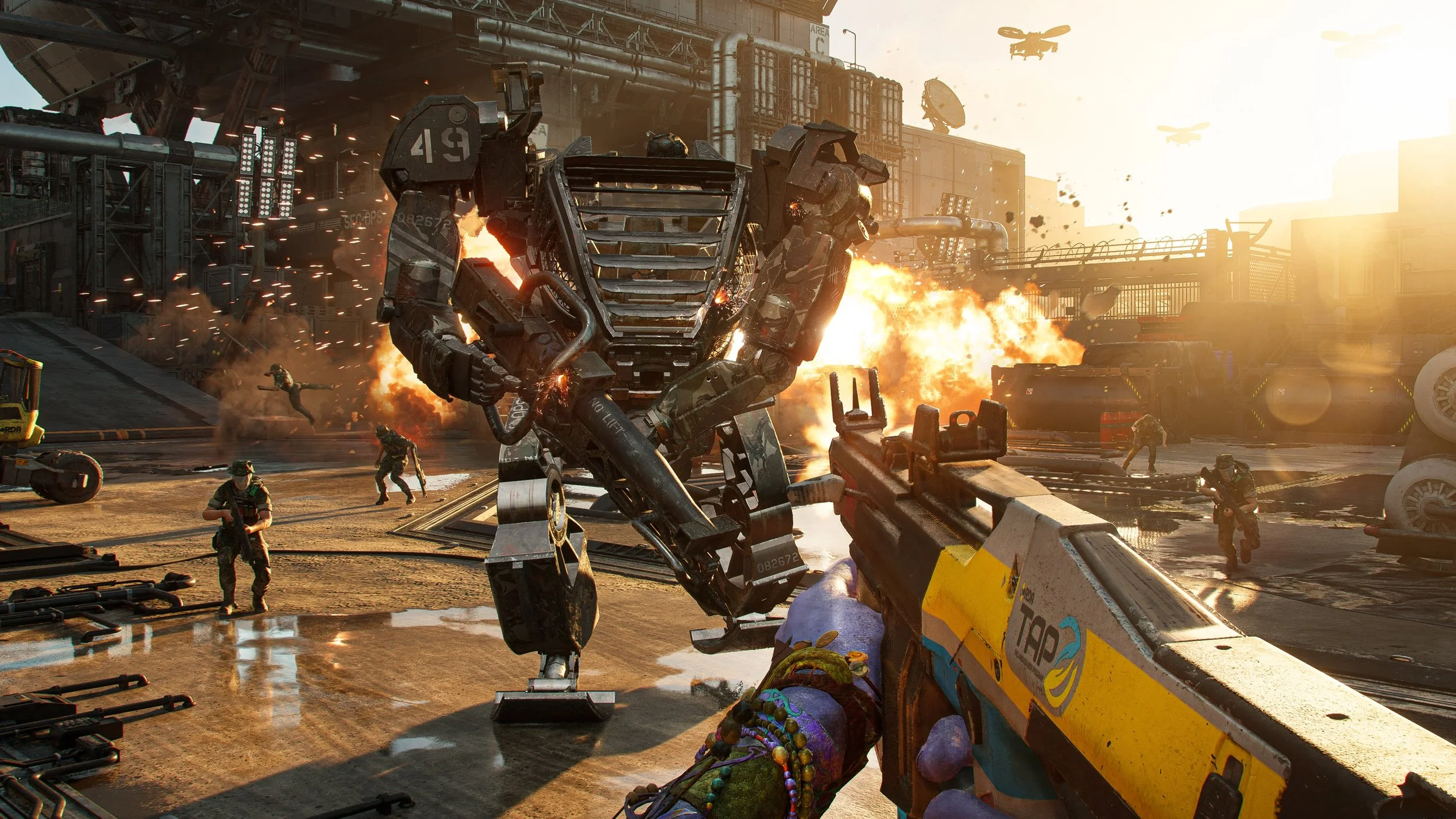Avatar: Frontiers of Pandora - Review

The wait is finally over. The Na’vi are fighting to take back Pandora, and there is a whole world of wonder to be explored. Avatar: Frontiers of Pandora is here, and the only person that can save it from the sky people, is you.
Avatar: Frontiers of Pandora is a first person, massively open world action-adventure title. Abducted by the corporation known as the RDA, you with a group of other Na’vi, are being indoctrinated in an attempt to control the native people of Pandora. Fifteen years after a tragic event, you are freed from the control and must reconnect with your own planet once again. Rediscover your heritage, join with other clans, soar through the skies, and fight back against the RDA to stop them from turning Pandora into another destroyed Earth.
Avatar is a somewhat ambitious approach to what has become an over saturated open world genre of games. It excels in incorporating crafting, combat, and exploration almost seamlessly alongside a mostly interesting story and narrative. The care put into ensuring that the resource gathering, and item crafting far exceeds a lot of other titles in this genre. Instead of being a side piece of content designed to bloat out gameplay, with little intrinsic value; it becomes a seamless part of gameplay. You’ll regularly be grabbing materials and filling your inventory as you explore the world on your way to the next settlement, or mining site that needs to be destroyed. Compared to many other open world games there is far less of a divide between the side content and the main content.
The blending of every element of gameplay is going to be what helps Avatar stand out somewhat in a very competitive landscape. With the success of titles like The Legend of Zelda, Elden Ring and Horizon, Avatar had a hard shot at breaking through. Even in moments of mundanity it does a good job making your actions feel like they are having an impact on the greater overall story. Early main missions turn into side objectives, with main story missions often requiring you to have completed certain side objectives to make them available, or to have explored enough of the world to have found the location of different fauna and flora that you need for items to progress the story. Avatar does what all open world games should be doing, in ensuring supplementary systems support the main game, rather than act as bloat and parasitic mechanics.
Exploration is the name of the game in this case as well. There is both upside and downside to this. The insistence to make all of open world titles with shooting and hunting being FPS rather than third person makes exploration an interesting affair. The environment is wild and lush, full of colour and dense. You’ll be regularly climbing trees, vines, and anything you can jump and scale. The first-person perspective means that you’ll often be staring at walls essentially, and this can be incredibly frustrating. Even with a widened POV, you’ll often be looking at nothing of consequence. This is a major shame, as the world itself is the most beautiful part of Avatar. Moments where you can stand on top of cliffs, or riding upon your Ikran, you can truly experience the world. Particularly on the Ikran where you are in third person and able to actively move the camera around to see things. Third person as a default camera view would have actively allowed you to always see the beauty of the world without needed to be physically standings still to do so. It would also make the constant parkour that you engage in constantly exploring the world.
Speaking of flying around on your Ikran, you’ll get two mounts over the course of the game. The Ikran and the Direhorse. One allowing you to fly and explore the world from up on high, and a constant companion. The Direhorses will be temporary companions, ones you soothe and ride to get across short distances more comfortably. With a world the size of Avatar (almost three times the size of GTA5), you’re going to be wanting to effectively use these mounts. The Ikran whilst enjoyable to use for the most part, is somewhat slower than it realistically should be. You’ll cross greater distances quicker, but even then, you’ll be wanting to actively unlock as many quick travel points as you possibly can. Even at full boost, the Ikran feels somewhat too slow, and you’ll find the tedium of flying long distances becomes off-putting very quickly. Which is disappointing as the mount aspect of the game was one of the areas that showed the most promise and intrigue. Flying through the skies of an alien planet at high speeds would be far more enjoyable, especially with how baffling largely the map itself is.
Another area that is both interesting and somewhat disappoint simultaneously is the combat. For the most part, the sheer size discrepancy between the Na’vi and the humans makes the combat encounters feel different to typical FPS titles. The Na’vi being so much larger than the humans means you’ll often be towering over them. It also lends itself to making sense that the bow and arrow is as lethal as it is. Straight shots to normal humans will kill them, and when fight mech suits you’ll often be able to destroy them in a few arrows, especially if you hit the weak spots. Using Na’vi senses you can tag enemies, as well as identify the weak spots on all enemies with them (as well as animals you can hunt). Problematically with combat is the fact that once you start actively fighting any enemies, your stealth element falls apart. This is particularly difficult in situations where the mechs don’t die in one hit to a weak point, and suddenly every enemy can see where you are. Combat is also somewhat difficult even on the normal difficulty, and it doesn’t take more than a few seconds of gunfire to kill you. Thematically appropriate, but in terms of enjoyable gameplay it is somewhat frustrating.
Sidenote to the above mentioned Na’vi sense. Depending on whether you choose to have guided exploration or non-guided exploration, it will also show waypoints in the world to help you explore and navigate to your next mission a little bit better. On exploration setting, it can be incredibly difficult to navigate and find your way around the map. The mission directions are vague at best, and it can be incredibly frustrating to find a single NPC on a random hill in a thick brush of forest that looks hardly indistinguishable from all the other cliffs you’ve been climbing. If you enjoy the exploration, then it won’t be too much trouble. But without the Na’vi senses waypoint guidance, progression can be very slow going.
Lastly, the story. You’re looking at around twenty to twenty-five hours’ worth of story content. Closer to thirty-five to forty hours if you allow yourself to do side content as you progress through the main story. Coming into the story there isn’t much requirement to be hugely familiar with the Avatar movies. There are a few references made to in universe characters, but for the most part you can easily engage with the story without the background knowledge. The story itself is straightforward, a focus on fighting back against a company that is destroying a planet with their mining and pollution, as well as helping the native people fight back. The way the story is told itself however really elevates it. The missions can be stock standard at times, with clearing mining bases, or fighting off a group of the RDA. There are also specific story ones that will let you explore the world more fully, make bigger changes or greater discoveries as to how to fight back against the RDA. It’s not the best story ever written, but there is enough here to keep you in happy enjoyment for hours upon hours.
Avatar: Frontiers of Pandora is a solid game. At times it can feel a little bit like Far Cry with a forest world skin, but for the most part it stands on its own two legs. The story is well crafted, and the world itself is a joy to explore. Active choices like making it first person, and having the combat be as unforgiving as it can make it a bit frustrating at times. The mounts are fun at first but fall off in enjoyment somewhat quickly. Nothing is egregiously wrong with the game, and you’ll often find yourself enjoying yourself for hours on end. There are just a few things that could have been tweaked to make a good game great. A good step in the direction of Open World titles, and a masterclass in showing how to integrate all the systems into one flowing experience.
The Score
8.0
Review code provided by Ubisoft
The Pros
+Gorgeous sprawling world to explore
+Entertaining story with fun moments
+Size discrepancy between Na’vi and humans always gets a laugh.
The Cons
-Ikran flying is disappointing
-Combat can be a little too difficult for discernible reason
-First Person was a poor choice for a title the would benefit from third person









